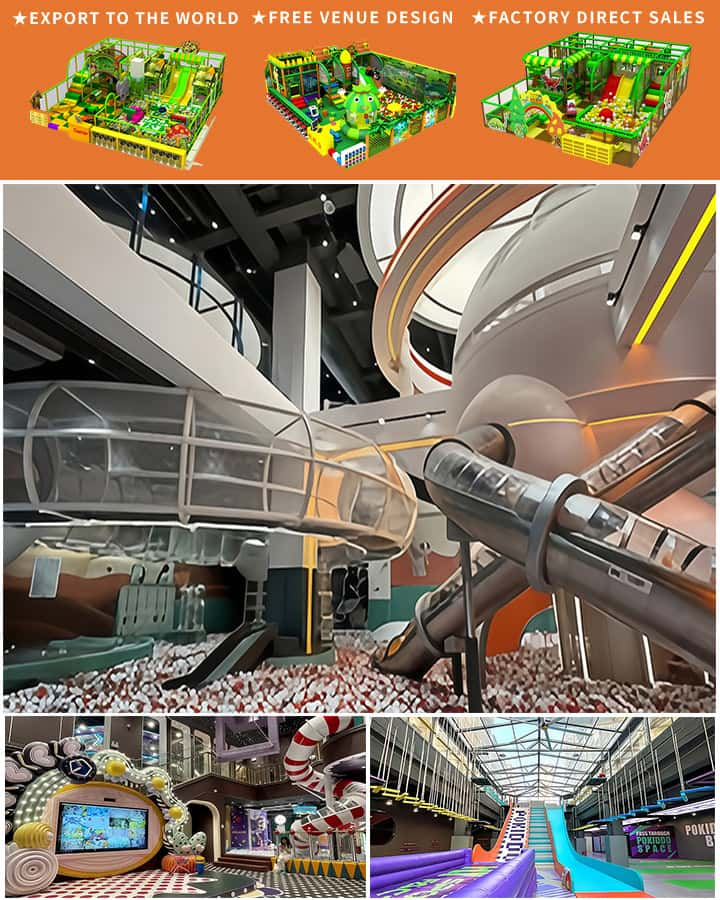Playgrounds are vibrant hubs of activity that cater to children’s boundless energy and imaginative play. Equipped with a plethora of engaging structures, these areas are designed to be both fun and developmental for young minds and bodies. Whether you’re a parent, educator, or playground planner, having an understanding of the different types of playground equipment is essential. Below, we provide a detailed list accompanied by descriptions to help you recognize and appreciate various playground installations.
Swings
1. Traditional Swings
- Description: The classic playground swing consists of a seat suspended by two chains or ropes. Children can sit on the seat and use their legs to push off and swing back and forth.
- Image: A simple wooden seat hanging from sturdy chains, often found in community parks.
2. Tire Swings
- Description: Made from an old tire, this type of swing provides a unique rocking motion as children sit inside the tire and hold onto the ropes.
- Image: A large rubber tire hanging from ropes, giving it a distinct look among other swings.
3. Bucket Swings
- Description: These swings have small buckets instead of regular seats, offering a fun, enclosed seating option that children can enjoy.
- Image: A swing with a plastic bucket, ideal for younger kids who might need a bit more support.
Climbing Structures
1. Jungle Gyms
- Description: Jungle gyms are intricate climbing structures with interconnected ladders, bars, and rings. They encourage physical activity and coordination.
- Image: A complex metal structure with various climbing elements like horizontal bars and vertical ladders.
2. Climbing Walls
- Description: These structures mimic the experience of rock climbing but are designed for safety and ease of climbing for younger children. They often have predetermined paths and handholds.
- Image: A textured, vertical wall with grips and footholds arranged at varying heights.
3. Playground Ladders
- Description: Ladders come in various forms, including vertical climbers and those integrated into larger structures, challenging children’s upper body strength and balance.
- Image: A series of metal rungs set at intervals, attached to a slide or climbing tower.

Slides
1. Standard Slides
- Description: The most common type of slide, usually made from metal or plastic, features a flat surface that allows children to slide down quickly.
- Image: A typical slide with a ladder at one end and a smooth, sloping surface leading to the ground.
2. Spiral Slides
- Description: These slides wind downward in a spiral pattern, adding an extra element of excitement to the sliding experience.
- Image: A tall, tubular structure that spirals around before reaching the ground level.
3. Tube Slides
- Description: Enclosed slides that allow children to slide through a tube, providing a sense of adventure and privacy.
- Image: A translucent plastic tube extending from a platform to the ground level.
Spinning Structures
1. Merry-Go-Rounds
- Description: A circular platform that spins when pushed, allowing several children to sit on its edge and enjoy the rotation.
- Image: A flat, rotating disk mounted on a central axis with seats around the perimeter.
2. Carousel Rides
- Description: Larger and more elaborate than merry-go-rounds, carousels feature animal or themed figures that move up and down as they rotate.
- Image: An ornate structure with painted horses or other creatures, complete with reins for kids to hold onto.
3. Spinning Cups
- Description: Small, cup-like rides that spin individually while also moving in a circular path, creating a dizzying yet thrilling experience.
- Image: Several colorful cups attached to the ends of rotating arms on a central platform.
Seesaws and Teeter-Totters
1. Traditional Seesaws
- Description: A board balanced in the center that allows two children to sit on either end, taking turns lifting each other into the air.
- Image: A long, flat plank resting on a pivot with seats at each end.
2. Balance Beams
- Description: Narrow beams that challenge children to maintain their balance as they walk from end to end, promoting coordination and confidence.
- Image: A straight, elevated beam that requires careful foot placement to traverse without falling off.
Interactive Play Structures
1. Musical Instruments
- Description: Integrated into many modern playgrounds, these instruments include drums, chimes, and xylophones that children can play with as they move around the playground.
- Image: Brightly colored instruments mounted on posts or platforms, inviting children to create their own playground soundtrack.
2. Sensory Play Areas
- Description: Designed for tactile stimulation, these areas often include textured surfaces, water features, and interactive panels that engage multiple senses.
- Image: An area filled with sand pits, water tables, and sensory walls for children to explore through touch and manipulation.
Safety Surfacing
1. Rubber Mats
- Description: Made from recycled rubber, these mats provide a soft landing surface to cushion falls and reduce injuries.
- Image: Interlocking rubber tiles covering the ground beneath playground equipment.
2. Wood Chips
- Description: Natural wood chips offer a softer alternative to concrete, although they require regular replenishment to maintain effectiveness.
- Image: A layer of wood shavings spread out under play structures and pathways.
3. Synthetic Turf
- Description: Durable and low-maintenance, synthetic turf mimics the look of real grass while providing a safe, non-abrasive surface.
- Image: Artificial grass installed around playground equipment, offering a lush green appearance year-round.
Understanding the variety of playground equipment available can help ensure that children have access to diverse experiences that promote physical fitness, social interaction, and imaginative play. Whether you’re planning a new playground or simply enjoying a day at the park, knowing these names and their functions enriches the experience for everyone involved.




